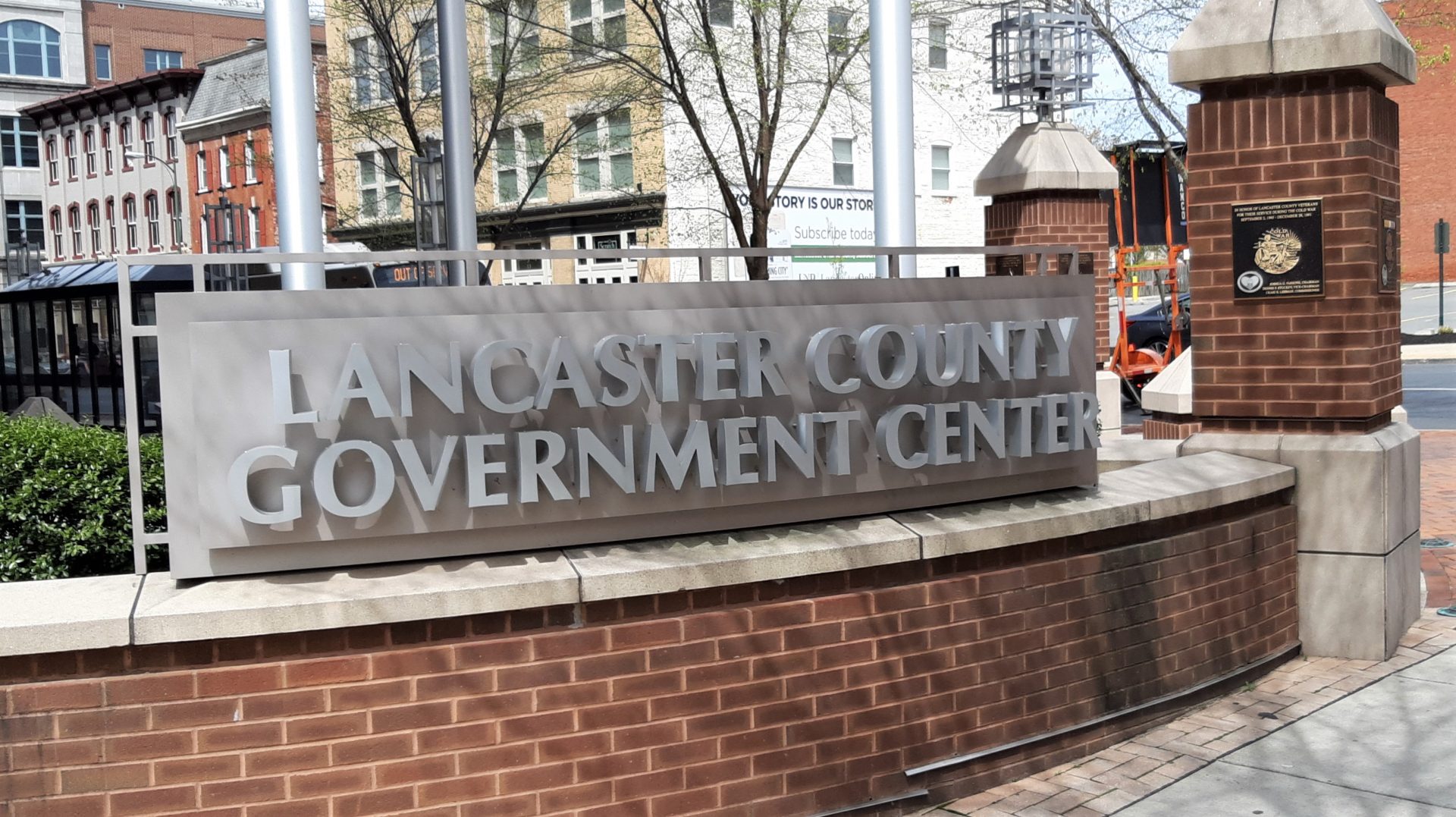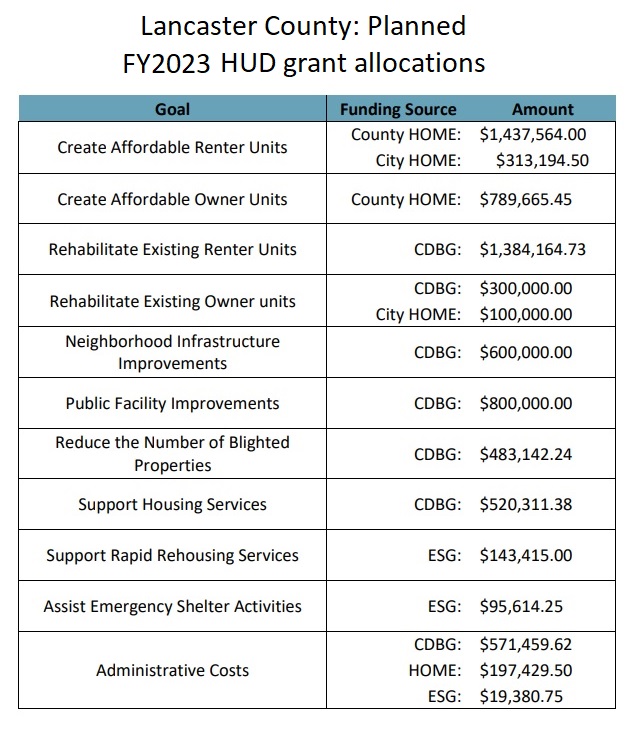Update, April 27: On Wednesday, the county commissioners voted to approve the Lancaster County Redevelopment Authority’s fiscal 2023 action plan for using its $7.76 million in HUD funds.
Previously reported:
The Lancaster County commissioners reviewed proposed allocations for federal Housing and Urban Development (HUD) money in their public work session Tuesday morning.
Each year, the Lancaster County Redevelopment Authority must decide how to spend three types of grant it receives from HUD:
- Community Development Block Grants, which support affordable housing and economic development;
- HOME Investment Partnerships funding, which supports affordable housing and rental assistance;
- Emergency Solutions Grants, which support homelessness services.
For fiscal year 2023, the authority is receiving $2.89 million from CDBG, $1.97 million in HOME funds and $258,410 in ESG, the authority’s Michaela Allwine and Jocelynn Ritchey told the commissioners. Allwine is the authority’s director of housing and community development; Ritchey is its manager of housing and resource development.
Adding in $1.84 million in reprogrammed CDBG and HOME funds and $801,000 in program income brings the total to $7.76 million.
Lancaster city and the county partner on one of the grants: The HOME funds. For 2023, the city is to receive $459,105 of that grant, or 23.25% of the total.
The authority’s draft plan calls for making “pretty substantial commitments to affordable housing,” Ritchey said.
The authority interviews local stakeholders and incorporates their feedback into its planning, Allwine said: “We want to make sure that we are looking at what we are doing comprehensively.”
For more information
The Lancaster County Redevelopment Authority has posted its draft 2023 action plan for using HUD funds on the Plans & Reports section of its website, along with a two-page summary.
County Commissioner Josh Parsons said he’s likely to vote for the plan if the other two commissioners do so, but warned that he is getting less likely to support allocations in future years unless they include more efforts to support homeownership.
“My biggest priority is helping people to own their own homes,” Parsons said. “I don’t think this … reflects that priority.”
He acknowledged that past boards have mainly outsourced the decision-making to the authority, but said, “We (county commissioners) do have a role in helping to set these priorities.”
Pointing to money allocated for affordable rental units and rehabilitation of rental properties, Parsons said he would like to see more for homeowner units.
“It’s what helps people out of poverty,” he said.
Allwine cited local county Land Bank activities and participation with Habitat for Humanity in promoting local homeownership efforts.
“We do hear what you’re saying,” she said. “We agree there’s a need.”
Regarding homelessness, Allwine cited the authority’s request for proposals for “initial pre-construction” for the planned homelessness services center on South Prince Street.
“We’re moving along,” she said.
Parsons said he appreciates enforcement against things like drug trafficking and solicitation in the city’s Binns Park. Nuisances and illegal activity there affect everyone, he said.
Commissioner John Trescot said he supports the authority’s plan.
“(It’s) looking at the county’s benefit,” he said. “I recognize that most people, at an early stage … can’t afford a house – the best way to get people into homeownership (eventually) is to be able to offer them affordable rentals.”
Builders, he said, are interested in building affordable homes, but the market tends to lack support processes for them.
He advocated for putting more county American Rescue Plan Act funds toward housing, suggesting there’s a “disconnect” between the county’s relatively limited use of ARPA for housing and the ongoing efforts being made by the authority.
In December, the commissioners approved spending $5 million from ARPA on six projects. Parsons voted against all but the two smallest ones, saying the others would be able to secure funding without the county’s help.
Commissioner Ray D’Agostino called the authority’s plan “a good overview” and agreed that a subsidy of some sort is generally needed for affordable housing.
However, he said, municipalities have to do their part.
“Municipalities have to have zoning barriers come down,” he said, pointing to what he called “staggering” regulatory burdens that add an estimated 30% to 35% to per-unit housing cost.
“That is a problem,” he said.
D’Agostino estimated the county has spent $14 million to combat homelessness over the past decade, a number that includes federal and state pass-through funds. More than half of that, he said, has been spent in Lancaster city.
“People should understand the county’s commitment,” he said.
The authority’s executive director, Justin Eby, said the authority will continue to work with developers to promote affordable housing.
A resolution approving the plan is on the agenda for the commissioners regular meeting Wednesday.







